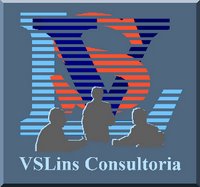Learning
First-hand learning
This is a slow process in which an organism finds a suitable response to a situation by trial and error.
A secretary finds out how her boss prefers his letters typed. A circus horse learns how to stand on its hind-legs. A cat learns to find its way home. A tennis player learns how to serve.
Learning involves doing something about a situation and then seeing what happens. The outcome may be good, bad or indifferent.
If you eat red berries the taste may be very nasty. If the circus horse stands on its hind-legs it gets rewarded with an apple.
Gradually one learns to shape the response so it produces only pleasure and no pain. Once it has been shaped in this way the response is elicited by special situations just as an instinct response might be.
Advantages
- The advantage of leaming over instinct is that one can develop responses to new situations.
- Responses can be exactly adjusted to a situation. Bad
responses can be improved or abolished.
Disadvantages
- Leaming is very slow as one has to mess around with tria! and error. This is especially so with long-range learning where the reward does not come at once but only after a long sequence ofresponses (so you cannot tell at once whether you are on the right track or not).
- Direct leaening can be dangerous. It would be very dangerous if everyone had to find out about an electric socket for themselves by putting their fingers into it.
Second-band learning
This is a sort of artificial instinct. It involves acquiring immediate responses to situations without having had to go through the slow trial and error process for oneself. It is passed-on or second-hand learning. It comes from books, TV, school, parents, other people, etc. A child learns that a car is dangerous without having to find out for himself. A student learns that vitamin B12 can cure a certain type of anaemia because his medical textbook tells him so. A man learns that an investment is risky because bis broker tell him so.
Advantages
- Second-hand learning is very much quicker and safer than first-hand learning.
- Second-hand learning can apply in advance to situations which have not yet been met.
- Second-hand learning can apply to situations which would never be encountered (for instance geography lessons about far-away lands).
- Second-hand learning can be stored and passed on (books, etc.) so that the total body of learning grows and grows.
- Lots of different minds (some much better than one's own) can get to work on a situation and produce a much better response than one could by direct first-hand learning.
Disadvantages
- You depend entirely on the trustworthiness ofthe source that is passing on the learning. Since you do not encounter the situation directly you can only meet it through the possibly prejudiced eyes of the person who is handing on the leaming.
- The second-hand response is a sort of average response suitable for everybody and not as finely tuned to individual requirements as a response leamed at first hand.
- There may easily be conflicting responses passed on by different sources of second-hand learning (e.g. parents, teachers, pals). This can be confusing.
- Since reward and punishment are less direct there is not so much keenness to leam as with first-hand learning.
EDWARD DE BONO. Practical Thinking. Penguin Books. New York, 1971


<< Home